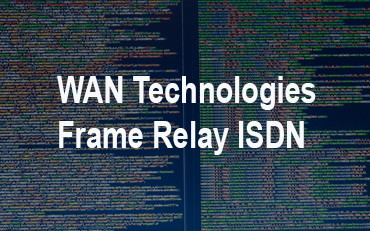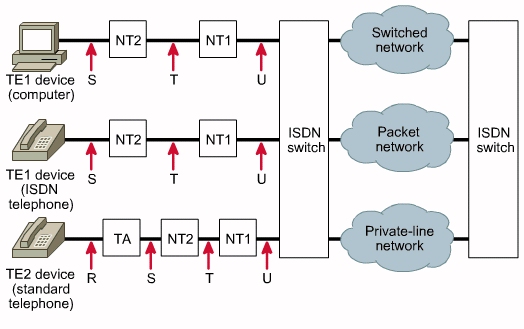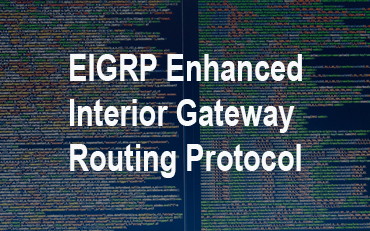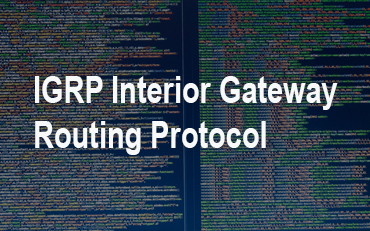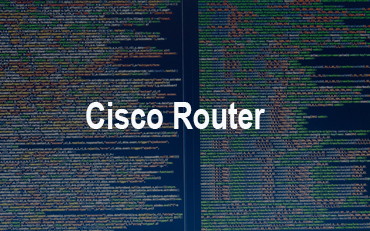WAN Technologies
What is Frame Relay ?
Frame Relay is a protocol which is used for connecting device of WAN.
Frame Relay is a way of sending information over a WAN by dividing data into packets
It operates at the Physical and Data Link layers of the OSI reference model
Frame relay most cost effective then point to point link can typically run at a speed of 64 Kbps to 45 mbps
Frame relay network are multi access network.
The router configure DTE and Frame Relay switches are DCE
It relies on upper-layer protocols such as TCP for error correction
Frame Relay is a switched data link-layer protocol that handles multiple virtual circuits using (HDLC) encapsulation
Frame Relay interface can be either a carrier-provided public network or a network of privately owned equipment, serving a single enterprise
Some important Frame Relay terms
Virtual circuit (VC) is a logical communications path that is used by frames travelling between DTEs.
Permanent virtual circuit (PVC) is a dedicated virtual circuit. It is point-to-point connection.
Switched virtual circuit (SVC) is a not dedicated virtual circuit. It established connection when transmission is required and disconnected when transmission is completed.
Data terminal equipment (DTE) is a device which connect to frame relay network,which is provided by service provider .Example is router. Generally customer have the DTE device and its referred to as customer premises equipment (CPE).
Data circuit-terminating equipment (DCE) is a device which reside at service provider network . DCE are the Frame Relay access switches .
Access link is the leased line between the DTE and DCE .DTE device may be router and DCE is a frame relay switch.
Access rate (AR) is the speed at which the access link is clocked.
Committed information rate (CIR) is the speed at which the bits can be sent over a VC.
Data link connection identifier (DLCI) is used to assign frames to a specific PVC or SVC.
Non-broadcast multi-access (NBMA) is a computer network which multiple host is connected but it transmit data to directly from one computer to another single host across a virtual circuit.
Local Management Interface (LMI) is used between a DCE and DTE to manage the connection.
What is ISDN ?
ISDN is Integrated Services Digital Network. ISDN is a technology that transmit digital data over standard telephone lines. It is used for both voice calls and data transfers.
ISDN is a set of digital services that transmit voice over existing phone line. Call setup is faster than with an analog modem because analog modern , because Analog Modem can transfer upto 9600 bps.
Some of variants of ISDN is,
Basic Rate Interface (BRI) – For transmission of data it have two bearer channels (B channels) and one data channel (D channel).
Primary Rate Interface (PRI) – It is end to end digital circuit .It is sed to carry carry voice, data and video traffic.
Always on Dynamic ISDN (AODI) – It is low-cost network connectivity, It supports speeds up to 2 Mbps.
ISDN Components
Terminal Equipment type 1 (TE1)
ISDN compatible device (Router with ISDN Interface)
TE1s connect to the ISDN network through a four-wire, twisted-pair digital link
Terminal Equipment type 2 (TE2)
ISDN Non-compatible devices.
Terminal Adapter (TA)
Converts standard electrical signals into the form used by ISDN
Needed for connection with TE2 devices
The ISDN TA can be either a standalone device or a board inside the TE2
Network termination type 1 (NT1)
Network-termination devices that connect the four-wire Subscriber wiring to the conventional two-wire local loop
Is a customer premises equipment (CPE) device (North America)
Network termination type 2 (NT2)
Intelligent device that performs switching & concentrating.
Provides multiple ISDN interfaces on an ISDN line.
You May Also Enjoy Reading This …

